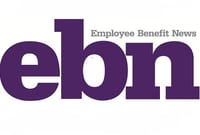 The Pension Protection Act of 2006 created a safe harbor for retirement plan sponsors to automatically enroll employees in their plans. This provision was designed to help plan sponsors and participants over the long term, and it has—but it also unintentionally fueled a surge in small accounts, hurting both constituencies.
The Pension Protection Act of 2006 created a safe harbor for retirement plan sponsors to automatically enroll employees in their plans. This provision was designed to help plan sponsors and participants over the long term, and it has—but it also unintentionally fueled a surge in small accounts, hurting both constituencies.
The surge of small accounts is the result of a perfect storm—increasing rates of adoption for auto enrollment combined with the high frequency of job changes observed in today’s mobile workforce. By 2009, only three years after the legislation was signed into law, defined contribution plans were saddled with an estimated 38 million inactive, stranded participant accounts, according to Cerulli Associates. Furthermore, the Employee Benefit Research Institute (EBRI) found that in 2012, approximately 40% of all retirement account balances were below $10,000. As sponsors know all too well, the incidence of many small, stranded accounts increases administrative costs while reducing their plans’ average account balances and other plan performance metrics.
The Solution: Adopting Auto Portability to Complement Auto Enrollment
The automated two-way flow of assets enables “auto portability,” whereby participants can have their retirement savings account balances systematically and automatically moved to their new employers’ plans when they change jobs.
Auto portability improves auto enrollment in two ways, making it more attractive and feasible for sponsors, especially those operating in industries where turnover is above national averages. For terminated participants, plan sponsors can systematically remove small accounts from their plans through a mandatory distribution program, with the assurance that those accounts will be “recycled”—automatically moved forward to the participants’ new employer plans.(see Employee Benefit News blog entry titled, " Why Dump Mandatory Distributions When You Can Recycle?") For their new hires, plan sponsors will benefit from small-balance, systematic roll-ins—ensuring that their automatically enrolled participant accounts start with the balance from their former plans.
Account consolidation, made seamless by auto portability, is a win-win for plan sponsors and participants. For sponsors, consolidating accounts lowers administrative fees, reduces lost and missing participants, and increases average account balances (see Employee Benefit News blog entry titled, " Reduce Plan Fees By Increasing Account Balances.")
For participants, automatic account consolidation at the time of a job change enhances their retirement readiness and helps them avoid premature cash-outs. In addition, maintaining multiple retirement accounts is more expensive than many participants realize—our research shows that widespread consolidation of stranded accounts could save participants $33.1 billion in fees over the course of 10 years!
Finally, auto portability is good public policy: EBRI estimates that an across-the-board 50% reduction in cash-outs could add an extra $1.3 trillion in savings to the U.S. retirement system over a 10-year period.
A Simple Way Forward
While many sponsors have adopted auto enrollment, far fewer enable its auto portability complement. The Plan Sponsor Council of America (PSCA) reported in a November 2013 survey that 50.2% of defined contribution plans have an auto enrollment feature. However, EBRI found that a mere 0.5% of separated participants’ assets were transferred into those savers’ new or current employer plans in 2012.
Setting up the automated two-way flow of assets is easy because the vast majority of plans are already configured to accept roll-ins from other plans. The PSCA’s survey found that 98.4% of 401(k) plans possess this feature.
Auto portability enables sponsors to leverage the benefits of auto enrollment while mitigating or eliminating the downsides. For sponsors with auto enrollment programs, the routes to establishing this complementary framework are short and direct—they can either work with their recordkeepers to begin actively promoting and providing full service for roll-ins, or collaborate with an external service provider that has a proven track record of facilitating the automated two-way flow of plan assets.
